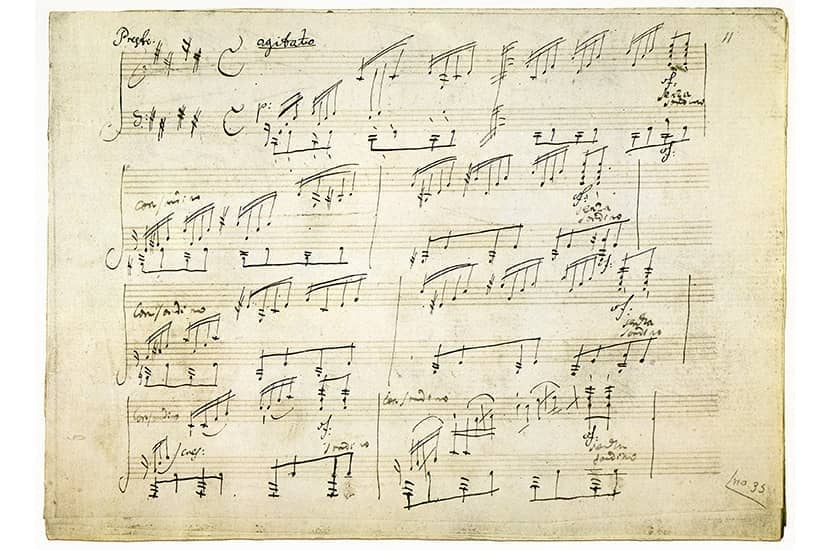From Ladybird’s The Story of Music (a dinky 50 pages, generously illustrated) to Richard Taruskin’s five-volume epic The Oxford History of Western Music, the history of classical music has been sliced and stretched in print to fit every possible length, format and agenda.
Andrew Gant’s Five Straight Lines joins the cluster of works jostling and elbowing at the midpoint of these extremes. The Oxford-based academic (whose previous books on carols and hymns have introduced us to a genial, approachable narrator, with a welcome glint in his eye), shouts no provocative argument or USP from his cover, makes no novel claims for his survey. This is, quite simply, a narrative of music from the beginning to the now.
Or it would be, if it weren’t for all those pesky questions. Where do you start? Who makes the cut and who is left out? What genres are we talking about when we talk about music? And, when it comes down to it, what is music, anyhow?
The title speaks, disarmingly, of music in terms of just five straight lines: the clear architecture of the stave within which western music is constructed. But the lines of the artform itself, as Gant gradually reveals, are more Kandinsky than Mondrian, unfolding in inconveniently wriggling coils, inter-sections and — let’s face it — tangles.
Gant’s solution is a sequence of interlocking, overlapping chronologies, trending broadly forwards while often darting in reverse. You can see the logic: the Renaissance isn’t neatly cleared away before a new set of composers bring out the Baroque. But the effect can be disorienting, particularly at the book’s consistently breathless pace. You think you’re securely crouched in the trenches of the first world war, only to find yourself plunged back into the perfumed salons of the Belle Époque.
There’s an organic flow to a narrative governed at different times by nation, genre or musical philosophy: sometimes you’re a symphonist, sometimes a German or an avant-garde radical. But this approach does see some individuals uncomfortably spliced. Hindemith, for example, makes just two cameo appearances. It’s hard to reconcile the hot-headed provocateur who ‘shocked his way to prominence’ with the sexually frenzied nuns of the opera Sancta Susanna with the concert hall composer who passes through 30 pages later, rigorous in the construction of ‘his own system of tonal but non-diatonic music… a great believer in professionalism and practicality’.
Starting from the bone flutes of 40,000 BC, Gant proceeds exactly as you’d expect, hitting all the major landmarks from the 12th-century Notre Dame school of poly-phony through Josquin and Palestrina to Bach, Mozart and Beethoven, Tchaikovsky, Wagner, and into spikier territory with Stravinsky, Schoenberg and beyond, right up to the rapper and songwriter Kendrick Lamar and the YouTube sensation Jacob Collier. If that sounds exhausting as well as exhaustive, then that’s about right.
The book’s horizontal reach is immense (though, like almost every similar work, promises of ‘From Mozart to McCartney’ go big on the former before tucking in the latter as a bit of an afterthought); but I’d happily sacrifice so many namechecks and potted biographies for a bit more vertical depth. A late chapter, taking Britten, Messiaen, Copland and Shostakovich as four touchstones of a shared century, offers a tantalising alternative model — one with more room for interpretation, contrast and comparison.
This is, after all, not just a history but a history of music. It should, at the very least, be one damn sound after another. Individual works cross the page, some efficiently (if concisely) described and analysed. But while I came away charmed by Gant’s clever turn of phrase, grateful for his distilled clarity of thought, I wasn’t hearing or feeling any of it myself. The best works of this kind — Paul Griffiths’s A Concise History of Western Music; Carolyn Abbate and Roger Parker’s A History of Opera; Alex Ross’s The Rest is Noise — conjure their own shifting soundtrack from page to page, recreating the music in your ears even as they describe it.
This is a book written by an academic — for good and ill. Themes — music’s relationship to its own history; the changing role and status of the composer in society; the part played by the listener; the politics of sound (and the sound of politics) — are diligently teased out. Concepts are gamely and skilfully wrestled into submission (try explaining isorhythm in a single sentence and see how you fare). Opinions and emotions less so.
Gant is so coy, so careful not to load the dice or reveal his own hobbyhorses, that the effect can be a little clinical. I kept hoping for a surprise, for a musical also-ran to assert passionate claim to centre stage, for Gant to come out as champion for some obscure work, but all is careful and proportional. For some, order and proportion trump clamour and contrarian argument every time. So if your taste is for J.C. Bach, Ravel or Palestrina, then Gant might just be your man. If, how-ever, you’re more Berlioz, Gesualdo or Stockhausen, then this tidy history seems less likely to satisfy.






Comments